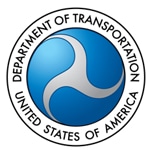Seeks input from public, stakeholders before Jan. 30, 2016 for final vision

“Over the next 30 years, an additional six million people will live along this corridor. To keep everyone to move safely, quickly and efficiently, we need smart planning and significant investment in the Northeast Corridor,” said U.S. Transportation Secretary Anthony Foxx. “We are seeking input as we work toward developing a long-term vision that will prioritize rail investments to ensure a vibrant and safe future for the northeast region and the nation.”
The Tier 1 Draft EIS includes alternative visions for investment in the NEC. The visions range from maintaining the current level of investment and service to significant investment that would dramatically increase rail’s role in transportation for the Northeast. FRA will hold 11 public hearings to gather input and feedback from stakeholders that will inform FRA’s decision on a preferred investment program.
The NEC is the nation’s busiest rail corridor, with more than 700,000 passengers traveling each weekday through eight states and the District of Columbia. The NEC contributes more than $100 million every day to the Northeast’s economy, but it currently operates on outdated infrastructure, much of it built more than 100 years ago, with capacity constraints that cannot accommodate future growth. Choke points and aging infrastructure often disrupt the system’s reliability and performance.
“Trains that connect our nation’s university hub to its financial center to its capital ride over bridges built before 1910 and through tunnels built after the Civil War,” said Federal Railroad Administrator Sarah Feinberg. “NEC FUTURE will guide the region in developing a long-term framework to build a stronger Northeast Corridor that supports economic growth and creates jobs.”
The Tier 1 Draft EIS, which outlines the various visions, is now available for download and review by the public at www.necfuture.com. Print copies are also available at libraries throughout the region.
FRA considered a broad range of alternatives for the NEC, beginning in 2012 with a public scoping process and analysis of travel markets. In 2013, the FRA consolidated nearly 100 initial concepts into 15 visions (Preliminary Alternatives) that varied by level of investment, service, and route. In 2014, the FRA evaluated the Preliminary Alternatives and identified three distinct Action Alternatives; these have been refined and analyzed in the Tier 1 Draft EIS. Each Action Alternative represents a different long-term vision for improving passenger rail service that will enhance mobility options, improve performance, and better serve existing and future passengers in the study area.
Public Hearings
The hearings provide an opportunity for public input on the Tier 1 Draft EIS. No decision has been made on which alternative best meets the region’s needs, and the FRA will consider all comments received during the comment period in making its decision.
FRA will hold public hearings in each of the eight states along the NEC and the District of Columbia. Hearings will be held from 4:00 p.m.-7:00 p.m. on the following dates and locations:
- 12/9, Boston, MA – Back Bay Events Center, 180 Berkeley Street
- 12/14, New Haven, CT – Gateway Community College, 20 Church Street
- 12/15, New York, NY – CUNY Graduate Center, 365 Fifth Avenue (at 34th Street)
- 12/16, Washington, DC – Hall of States, 444 North Capitol Street, NW
- 12/17, Providence, RI – Rhode Island Department of Administration, One Capitol Hill
- 1/11, Philadelphia, PA – SEPTA, 1234 Market Street, Mezzanine Level
- 1/12, Mineola, NY – Nassau County Municipal Building, 1550 Franklin Avenue
- 1/13, Hartford, CT – The Lyceum, 227 Lawrence Street
- 1/14, Baltimore, MD – University of Baltimore, 21 W. Mt. Royal Avenue, 5th Floor
- 1/19, Newark, NJ – NJ Transit, 1 Raymond Plaza East, 9th floor
- 1/20, Wilmington, DE – Delaware Technical Community College, 333 Shipley Street
Each hearing will include brief presentations at 4:30 p.m. and 6:00 p.m. There will be an opportunity to speak following each presentation. Individuals planning to speak should sign up when they arrive. A stenographer will also be available for private testimony.
In the event of inclement weather, hearings may be canceled or rescheduled. Please check the website at www.necfuture.com. Persons requiring special assistance to attend a hearing should contact the NEC FUTURE team at comment@necfuture.com.

 WASHINGTON – If left untreated, sleep apnea poses serious risks to anyone who sits behind the wheel of a commercial motor vehicle or climbs into the cab of a locomotive.
WASHINGTON – If left untreated, sleep apnea poses serious risks to anyone who sits behind the wheel of a commercial motor vehicle or climbs into the cab of a locomotive. WASHINGTON – U.S. Senator Lisa Murkowski responded to the news that the Alaska Railroad Corporation (ARRC) became the first railroad in the nation permitted to transport liquified natural gas (LNG) by rail, saying:
WASHINGTON – U.S. Senator Lisa Murkowski responded to the news that the Alaska Railroad Corporation (ARRC) became the first railroad in the nation permitted to transport liquified natural gas (LNG) by rail, saying: Washington – The U.S. Department of Transportation (DOT)’s Federal Railroad Administration (FRA), the State of North Carolina and the Commonwealth of Virginia announced today that they have signed off on the Final Environmental Impact Statement (FEIS) for the proposed Richmond to Raleigh (R2R) passenger rail line along the Southeast Corridor. The completion of the FEIS is one of the final steps necessary before construction of the project can move forward once funding is secured.
Washington – The U.S. Department of Transportation (DOT)’s Federal Railroad Administration (FRA), the State of North Carolina and the Commonwealth of Virginia announced today that they have signed off on the Final Environmental Impact Statement (FEIS) for the proposed Richmond to Raleigh (R2R) passenger rail line along the Southeast Corridor. The completion of the FEIS is one of the final steps necessary before construction of the project can move forward once funding is secured.